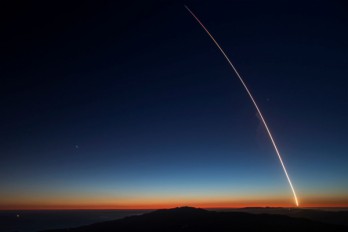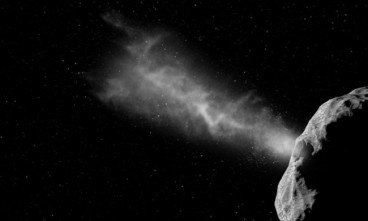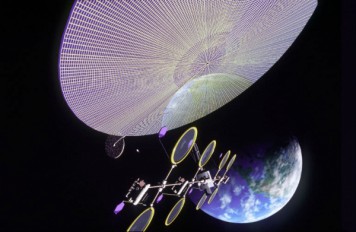Cheops Satellite launched to study exoplanets

The Cheops (CHaracterising ExOPlanet) Satellite that will explore outer space was launched on December 18, 2019.
The mission is conducted by the European Space Agency (ESA) in an effort to better understand distant worlds. The satellite that is equipped with a high-tech telescope, was launched at 08:54 GMT from French Guiana.
The satellite was attached on a Soyuz rocket among more satellites and, according to the schedule, there were going to be deployed 4 hours and 14 minutes after the launch. Cheops will have an unusual pole-to-pole orbit at an altitude of more than 800 kilometers above the ground.
The main purpose of the mission is to investigate stars that have planets orbiting them and are located nearby our solar system. In order to achieve this, the scientific team will use the transit method, which is based on "measuring the minute dimming of a star as an orbiting planet passes between it and the Earth." The technique was also used in the Kepler Telescope that was launched by NASA. Characteristics including the size and the orbit time period will be derived. The researchers aim to assess whether those planets could host life.
Since the late 1990s, technology has enabled the discovery of 4,500 exoplanets in the outer space. However, their characteristics can be derived only after recent advancements. Cheops will focus on 400-500 of those planets in a mission that will last for about 3.5 years. Those planets may be between Earth and Neptune in terms of size. In addition, there is a new system established on Earth that uses telescopes to detect more planets that may be investigated by Cheops.
"CHEOPS will make high-precision observations of the planet's size as it passes in front of its host star. It will focus on planets in the super-Earth to Neptune size range, with its data enabling the bulk density of the planets to be derived — a first-step characterization towards understanding these alien worlds," ESA stated.
The Telescope is sensitive enough to measure minimal light changes. If a planet with the size of Earth passes by a star with the size of our sun, the decrease of luminous intensity is just 0.01%. "The difficulty was in building an optical system that is capable of measuring these minute light changes. To give you an example, when we wanted to test this in the lab we didn't find a single light source in the world that was stable to this precision to allow us to test our telescope - so we had to build one," Prof. Willy Benz, the consortium principal investigator of Cheops, stated.
Future Missions
Regarding the future missions in space, NASA plans to launch James Webb Space Telescope that will detect infrared radiation from the first time period of the universe's existence in 2021. Moreover, the Wide-Field Infrared Space Telescope (WFIRST) mission will conduct a survey on dark energy and exoplanets and will take place in the mid-2020s.
ESA has a mission (Euclid) similar to WFIRST that will be launched in 2022.
Sources: BBC, Space, NYtimes, <br />
Media
- Soyuz ST-A launches CSG-1, CHEOPS, OPS-SAT, EyeSat & ANGELS
- SciNews
Want to read more like this story?

ESA launches robot to clean the atmosphere from satellite debris
Jan, 13, 2020 | NewsThe European Space Agency (ESA) will send a robot to clean space from the garbage gathered by s...

From what material will buildings on Mars be constructed?
Sep, 16, 2020 | NewsA material that exists on Earth but is not used in the construction industry can be utilized for fut...

Robotic vehicles to fix broken satellites
Dec, 09, 2019 | NewsScientists from the University of Cincinnati in Ohio have developed robots that can fix defecti...

ESA satellite narrowly avoids collision with SpaceX craft
Sep, 02, 2019 | NewsESA (European Space Agency) reported changing a satellite's course to avoid a collision with a Space...

How to address satellite debris issue
May, 26, 2020 | NewsAs years pass by, the assembly of satellites in space is beginning to become a major issue that need...
NASA records biggest ever 'Monster quake' on Mars, estimated to be magnitude 5
May, 11, 2022 | NewsNASA’s InSight Mars lander has detected the strongest quake ever detected not only on Mars but on a...

The Conversion Of Earth Into...Spa!!
May, 27, 2015 | NewsA research of Stanford University in the US brings a phenomenon out into the open!! According to...

Earth's first mission for planetary defense
Jul, 04, 2018 | NewsOver the next decade, both NASA and the European Space Agency (ESA) will take the first steps toward...

How about space-based solar panels?
Apr, 19, 2018 | NewsThe concept was theorized over half a decade ago, as space-based solar arrays would be illuminated 2...
Trending

Vertical gardens in Mexico City to combat pollution

Saudi Park Closed After 360 Big Pendulum Ride Crashes to Ground, 23 injured

Characteristics of Load Bearing Masonry Construction

Taipei 101’s impressive tuned mass damper

Dutch greenhouses have revolutionized modern farming

Federal court rules Biden’s offshore drilling ban unlawful


